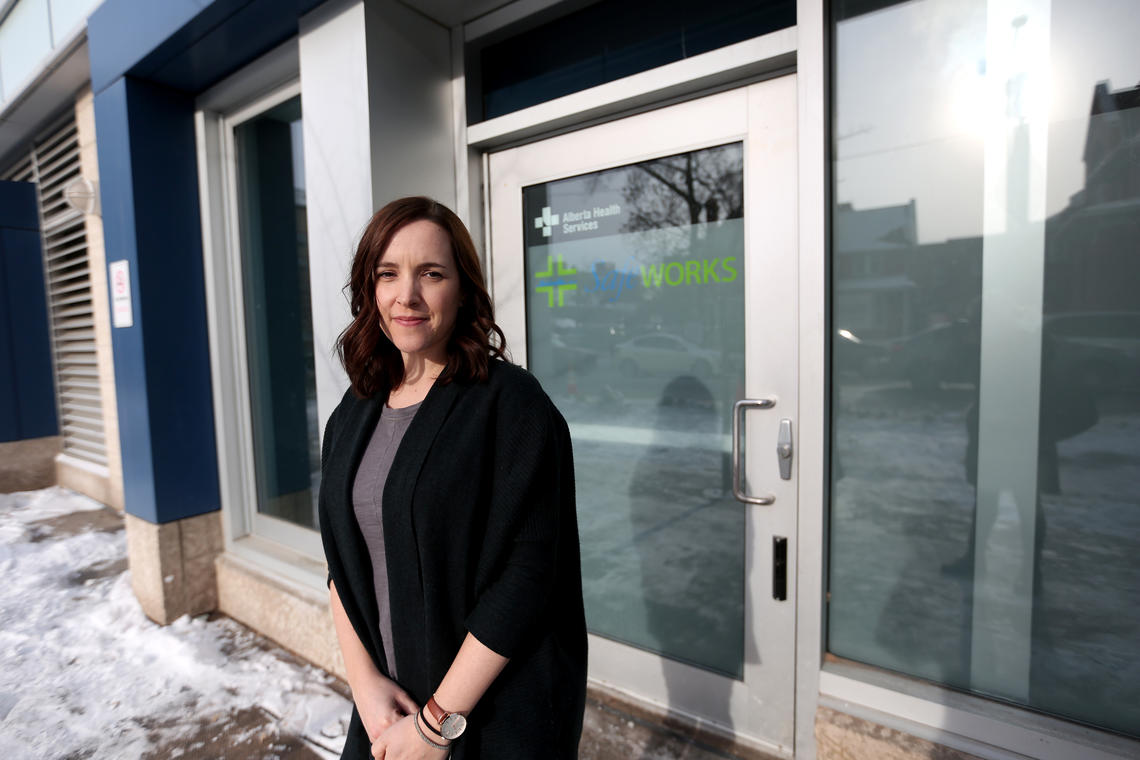Jan. 19, 2018
UCalgary research behind the city's first supervised consumption site
Calgary’s first permanent supervised consumption site is now up and running, and it was informed by work conducted by University of Calgary researchers.
The centre, which opened in its permanent facility on Jan. 15 at the Sheldon M. Chumir Health Centre, is designed to mitigate health risks such as infection and overdose. It also offers people access to other services and support, says Katrina Milaney, PhD, of the O’Brien Institute for Public Health and an assistant professor in the Department of Community Health Sciences at the Cumming School of Medicine.
Starting in early 2017 Milaney led a needs assessment, funded by Alberta Health, and conducted research and analysis that informed the Calgary Coalition for Supervised Consumption group’s recommendations for supervised consumption services in Calgary.
“One of the things that people don’t understand about supervised consumption sites is that they offer an opportunity to engage people in conversations about other services and supports,” says Milaney. She led a team who surveyed 370 Calgary users to explore everything from drug of choice and patterns of use, to mental and physical health needs.
“We asked questions about people's experiences with drug use, with trying to access care and treatment programs, and then we asked really specific questions about what types of services they would use at a supervised consumption site,” Milaney says.
The site offers clean supplies to drug users who can snort, swallow or inject under the watchful eyes of registered nurses. Social workers are on hand to help refer clients to housing, or to access detox services or an opioid dependency program.

Claire O’Gorman, program co-ordinator for Safeworks
The need for such a facility has been clear a very long time, says Claire O’Gorman, project co-ordinator for Safeworks, the Alberta Health Services program which runs the site. O’Gorman credits the research for giving them a nuanced understanding of what people need out of supervised consumption.
Between January and July of 2017, Alberta recorded 482 opioid-related deaths. That’s up 40 per cent over the previous year.
The temporary facility that had been running since the end of October saw 2,551 visits by more than 300 people. O’Gorman says they were able to intervene with 55 overdoses.
“That’s 55 lives saved already,” says O’Gorman.
Milaney, who has conducted similar assessments for Red Deer and Medicine Hat for potential sites in those municipalities, cautions that while supervised sites are an important tool in the harm reduction toolkit, they are not the silver-bullet solution.
“Certain people will access supervised consumption sites, and lots of people will not,” she says. “And so the conversation about harm reduction and how we continue to expand harm reduction more broadly is a really important conversation that we need to keep having.
“Our survey targeted a particular group of people, 70 per cent of whom said they would access a supervised consumption site. Which is great. But there are still a lot of people out there who won’t, so how do we reach them?”
The Calgary Coalition for Supervised Consumption Services includes the following partner organizations: HIV Community Link, Safeworks, Alberta Health Services Population, Public & Indigenous Health, Alberta Health Services Mental Health and Addictions, Calgary Council on Addiction and Mental Health, Sunrise Community Link, Calgary Homeless Foundation, the City of Calgary, CUPS, Calgary Drop-In Centre, Changing the Face of Addiction, Safe Communities Opportunity and Resource Centre (SORCe), Calgary Police Service, Alpha House Society, The Alex Youth Services, Calgary Recovery Services Task Force, The Alex Pathways to Housing, Alberta Addicts Who Educate And Advocate Responsibly (AAWEAR) and the Aboriginal Friendship Centre.
